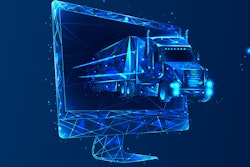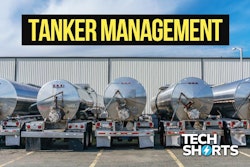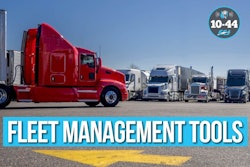Filling truck seats with driver talent is a constant hot topic in the trucking industry. Even recruiting diesel techs is regularly talked about. But attracting tech talent is often overlooked.
Several transportation industry professionals gathered recently during a webinar hosted by Optym to discuss best practices for implementing technology and the increasing importance of onboarding the right people in the IT departments of trucking organizations as technology in the industry is quickly evolving.
The industry has long been known for antiquated tech stacks – something that could deter young tech professionals exiting college and entering the job market. But trucking companies need fresh talent to take on the wave of technology being thrown at them, from artificial intelligence and machine learning to autonomous and electric vehicles to the much more common challenge of upgrading to more modern operating systems.
Southwestern Motor Transport operates on the “tried and true” database of the IBM AS400, but Vice President of IT Robert Bernal said it’s far from outdated because the use of APIs allows them to integrate with newer technologies. And when it comes to who’s operating that system for SMT, he said he’s simply looking for passionate IT people. His pitch to attract younger professionals to IT in trucking involves getting them excited about the industry’s importance to the country.
He said he learned at a cybersecurity conference that the top industries attacked in the U.S. are hospitals, followed by financial institutions, followed by transportation and logistics – because if trucks are stopped for three days, grocery shelves are empty.
“Yes, maybe transportation and logistics could be boring, but you’re in an industry that keeps this country running, and we need smart people – young and old, doesn’t matter – to keep that moving,” Bernal said.
Nate Johnson, CEO and founder of management and technology consultancy GLCS, said the logistics and brokerage side of the industry is doing a good job recruiting younger people because they have deployed new technology solutions, but the asset side – with some of its more modern systems still 20 or 30 years old – is not. Why?
“You're tracking hundreds and hundreds of data points to move your trucks on a daily basis. The logistics side, I don't want to say they're not as complex because there's a lot going on there, but you're managing assets, and that is complex,” he said. “You guys have a lot going on, and not only are you tracking all these data points on the trucks, drivers, compliance, etc., you have all those pieces and products moving on and off the dock.”
That makes it more difficult to upgrade technology, he said.
Engaging employees in tech upgrades
The webinar panelists talked extensively about the pertinence of not only understanding a company’s specific pain points and how a new technology under consideration would solve those but also the significance of having buy-in across the organization by involving everyone, from leadership to frontline workers.
Roadrunner Chief Operating Officer Tomasz Jamroz said it’s not about the technology itself but the outcome, and the outcome will be negative without having buy in or engagement from end users, aka the frontline workers.
“Starting something in the boardroom is the first recipe for catastrophe … because, unfortunately, the majority of executives have no clue of their business needs. They think they do, but very few actually go to that … floor level of operations to really know where the challenges are,” he said. “I’m not excited about sitting in the corporate office. I’ve got to go be on the dock with my employees and really understand where the challenges are.”
He said most of Roadrunner’s projects have been a success but not all, and it all depended on the level of engagement.
Retaining tech talent
At the same time trucking companies need fresh tech talent, they also need to keep the talent they have, creating a hybrid environment where new members have the energy and excitement of experimenting with new technologies, while the veterans continue to manage the legacy systems still in place.
But then the question becomes how to get the ever-important buy in from veteran tech pros when they’re afraid new technology like AI will eventually replace them.
Ed Corcoran, chief technology officer at R.E. Garrison Trucking, said employees are naturally concerned about how technology is going to impact them, but technology is being implemented to solve an overarching business problem, not with the intention to replace them.
“You've got to explain that early,” he said, adding that “I think you let humans do human things because those will always be out there, and then you try to use technology to give the humans more time to do human things.”
Johnson said technology is primarily a means of enhancing employees’ productivity.
“At every transportation organization, we look at this huge stack of work that needs to be done on a daily basis, and we all struggle trying to get that done. So people are going to become more efficient, and perfectly deployed technology will eventually become more automated,” Johnson said. “That may impact the overall headcount eventually, but I doubt it's going to be something we're going to see because we're going to need people to support that (technology).”












